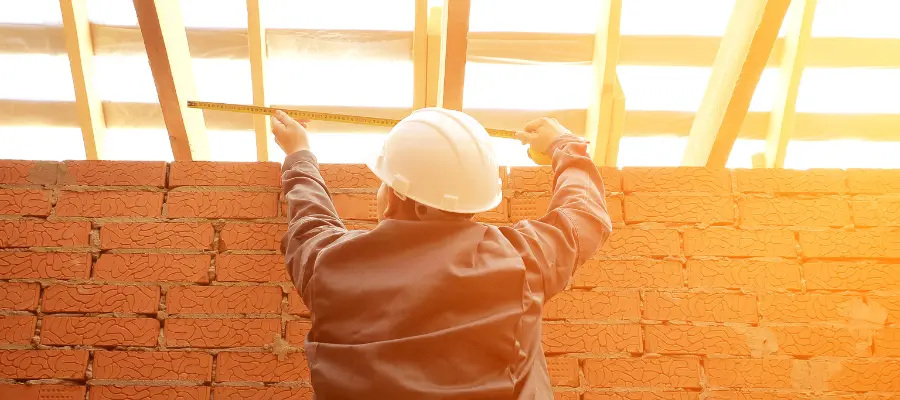Budgeting is the major part before starting a house construction process. Labour cost is one of the crucial parts to estimate the overall construction cost. Labour rates can account for a considerable portion of the total construction costs, so understanding labour charges is essential for effective planning and cost management.
In this blog of Brick & Bolt, you’ll explore everything you need to know about home construction labour costs per square foot.
Understanding Labour Costs in House Construction

Home construction labour costs refer to the total costs associated with hiring workers to perform various tasks required to complete the building. These labour costs incorporate employee salaries, perks, and payroll-related taxes for different types of labour, including skilled and unskilled workers, subcontractors, and specialised professionals.
Managing these labour costs for construction well helps finish the project on time and allows the community’s economic growth. Fair pay attracts good workers, making timely completion and long-term durability of your project.
Factors Influencing Home Construction Labour Costs Per Square Foot
Several factors can impact labour costs for house construction per sq ft. Understanding these factors is crucial for proper house construction cost estimation and effective project planning.
Type of Construction
House construction labour costs per sq. ft. depend significantly on the type of construction. Compared to normal homes, custom-built homes often require specialised skills and detailed craftsmanship from different types of contractors which tend to have higher labour costs.
Location
Working location plays a key role in determining labour costs for construction. In urban areas or regions with a high cost of living, labour rates for building construction are generally higher than those for constructing a house in a smaller town. When choosing the right location for your dream home, it’s important to consider the impact on labour costs.
Quality of Materials
The choice of materials also influences the labour rate for building construction. High-quality, premium materials often require specialised installation techniques and, ultimately, skilled labour, which increases labour costs. Ensuring quality assurance and quality control throughout the construction process is crucial, as highlighted in our blog post on the importance of quality assurance and quality control in construction.
Local Labour Market Conditions
Local labour market conditions, including the availability of skilled workers and the demand for construction services, significantly affect labour costs. In areas with a shortage of skilled labour, wages tend to be higher, driving up overall labour expenses. Conversely, in regions with abundant labour supply, costs may be lower.
Seasonal Factors
Seasonal factors can influence labour costs in house construction. During spring and summer, the demand for labour is high, leading to increased wages. In contrast, during off-peak seasons, labour costs may decrease as demand for construction work diminishes.
Knowledge of the factors that affect the overall construction cost will help you plan your budget and the overall project accordingly. Hence, we recommend reading our detailed blog on the factors affecting construction costs.
How to Manage Your Home Construction Labour Costs Effectively?

- Analysing Current Labour Costs
Analyse your current labour costs. Let’s say your financial planning and budgeting do not account for labour expenditures. If so, you probably need to gather the necessary information in order to fully analyse the labour costs as they stand right now. You need to pay special attention to a few crucial costs, like pay rates, perks, overtime charges, and other labour-related expenses. This will assist you in determining where there is room for improvement and cost-cutting.
- Effective Workforce Planning
Effective workforce planning is crucial for optimising resource allocation and ensuring operational efficiency so that you can maintain home construction labour costs effectively.
When employees have clarity regarding their schedules and shifts, it relieves possible stress and boosts morale. A well-planned workforce enhances productivity and contributes to a positive employee experience, as individuals can better manage their work-life balance.
- Efficiency and Productivity
Improving efficiency and productivity on the construction site can significantly reduce labour costs. This involves proper project management, ensuring timely materials delivery, and minimising downtime. Implementing efficient construction techniques, utilising modern tools and equipment, and maintaining clear communication among workers contribute to enhanced productivity and cost savings. Proper site preparation is also crucial, as highlighted in our blog post on house construction site preparation.
- Safety Matters
Ensuring workers stay safe isn’t just morally right; it’s also good for the bottom line. Accidents and injuries can result in delays, increased insurance premiums, and legal liabilities, all of which add to labour costs. Executing robust safety protocols, providing adequate training, and enforcing compliance with construction labour laws and safety regulations can lessen risks and prevent costly incidents. Check out our blog post on improving construction site safety best practices for more insights.
How to Calculate Labour Costs in Construction?
Accurately estimating labour costs is crucial for contractors to submit realistic bids and set proper expectations. So you can avoid mistakes during home construction.
There are three effective methods for calculating labour costs: unit pricing, square foot, and rule of two.
1. Unit Pricing Method
The Unit pricing calculates labour costs by hourly rates and time required. Simply put, it determines the hourly labour rate multiplied by the estimated time required to complete one unit (e.g., building a wall). Add material costs to get the total direct cost per unit. This method of calculating home construction labour costs is ideal for detailed project design and bid estimates.
2. Square Foot Method
The square foot method utilises historical cost data per square foot for various project types. Contractors collect and analyse average labour costs per square foot from past projects. This data enables quick budget estimates for prospecting or last-minute bids. Engineers and architects benefit from this method of calculating home construction labour costs during preliminary design stages to align with potential costs and the Construction Rate Per Square Foot varies from state to state
3. Rule of Two Method
The rule of two is a simple estimation technique of home construction labour costs based on the contractor’s experience. Labour costs typically comprise 40-50% of total project costs. Take the known or estimated labour cost and multiply it by two, then add a 10% contingency. While less precise, this method provides a rough total cost estimate when detailed labour data is unavailable.
Conclusion
House construction labour costs are crucial as they influence the project’s budget, quality, timeline, and compliance. Effective management of these costs is essential for successfully completing a construction project, ensuring that the house is built to the desired standards while remaining within financial constraints.You can use online tools like the Brick & Bolt Cost Estimator for an initial estimate costs for your home construction project.

